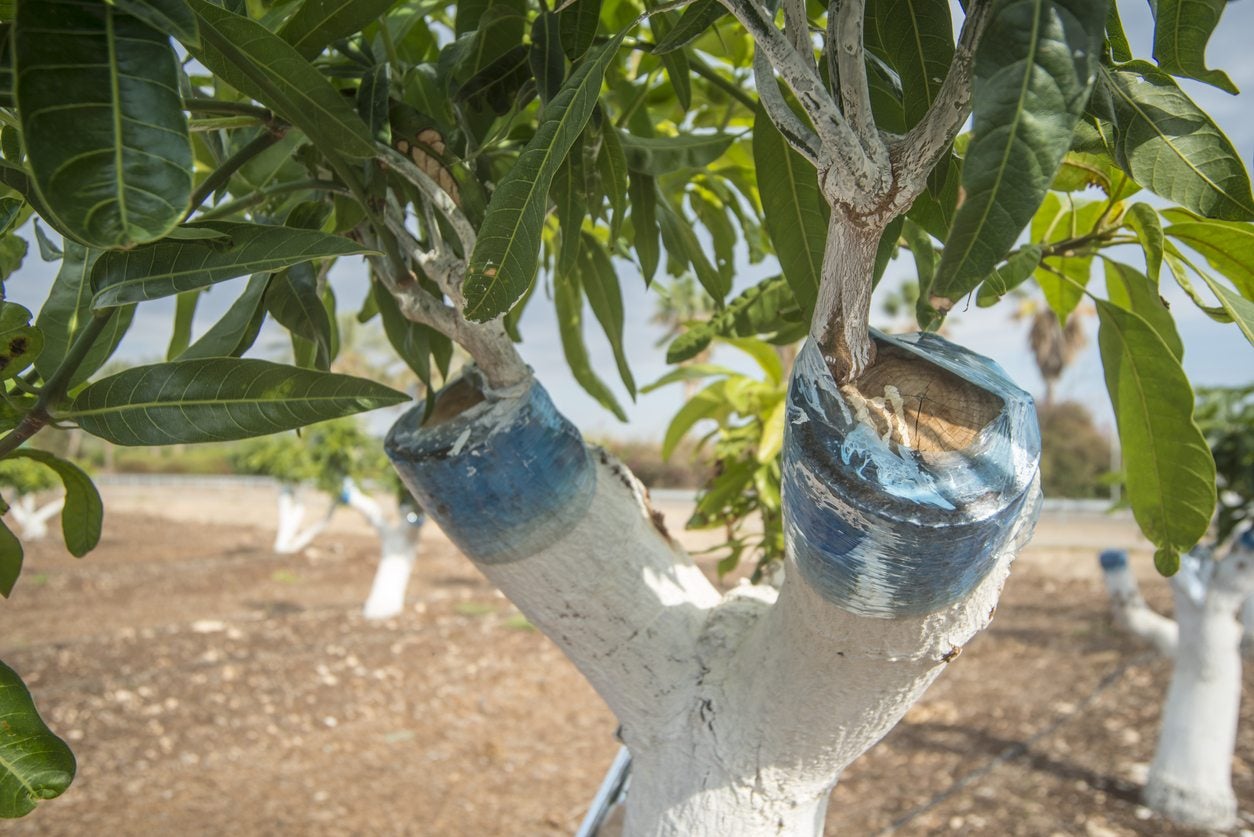
Mango tree propagation may be accomplished by either planting seeds or through the grafting of mango trees. When propagating by seed, trees take longer to produce fruit and are more difficult to manage than those that have been grafted, thus mango tree grafting is the preferred method of propagation. In the following article, we’ll discuss how to graft a mango tree and other pertinent information of this technique.
Mango Tree Propagation via Grafting
Grafting of mango trees, or other trees, is the practice of transferring a piece of mature, bearing tree or scion to a separate seedling called rootstock. The scion becomes the canopy of the tree and the rootstock the lower trunk and root system. Mango tree grafting is the most reliable and economical method of mango propagation. There are several types of mango recommended for use as rootstock; both Kensington and common mango are suitable, and in South Florida, "Turpentine" is the recommended choice. What matters most is that the rootstock is vigorous at the time of grafting. Its size and age can vary as long as it is strong and healthy. That said, the most common stock should be about 6 months to one year of age. Grafting is not difficult provide you keep a few things in mind. Along with using healthy rootstock, use only healthy scions or bud wood with active buds. Although bud wood can be wrapped in plastic and stored in the refrigerator for a time, for best results, use fresh scion wood. Practice good sanitation. Think about grafting as doing surgery. Attempt your grafting during the warmest months of the year when temps are above 64 F. (18 C.). There are a few grafting methods that are successful with mangos. These include wedge or cleft grafting, chip budding and whip grafting, but the most reliable method is veneer grafting.
How to Graft a Mango Tree
Remember, you want vigorous, healthy rootstock. The chosen seedling stem should be between 3/8 and 1 inch (1 to 2.5 cm.) across, vibrant green in color, free from rot or disease, and showing signs of healthy leaves and buds. Cut the chosen rootstock from the tree about 4 inches (10 cm.) above the soil. Use a very sharp pair of pruning shears or a special grafting knife. Make the cut level and take care not to damage the stem below the cut. Use a knife to split the remaining stem in half going from top to bottom, to about an inch (2.5 cm.) above the soil’s surface. The next step is locating a new growth shoot or scion on an existing mango tree. The thickness of the scion should be equal to or slightly smaller than the harvested rootstock and should have fresh buds and leaves. Cut the 3 to 6 inch (7.5 to 15 cm.) long piece of the scion from the tree and trim back the uppermost leaves. With a knife, make a wedge in the cut end of the scion and slice the bark away along each side to create an angled point. Place the scion wedge into the slot you’ve cut in the rootstock. Be sure they line up. Use grafting tape to secure the rootstock to the scion. Put a plastic bag over the new graft and tie it off at the bottom to create a warm, humid environment and protect the new graft from insects and pests. Once the tree has begun growing, remove the bags. Remove the tape from the graft once the tree produces new leaves. Water the tree, but do not over water after grafting. Suckers are often prevalent post-grafting. Simply prune them out.
Sign up for the Gardening Know How newsletter today and receive a free copy of our e-book "How to Grow Delicious Tomatoes".

Amy Grant has been gardening for 30 years and writing for 15. A professional chef and caterer, Amy's area of expertise is culinary gardening.
